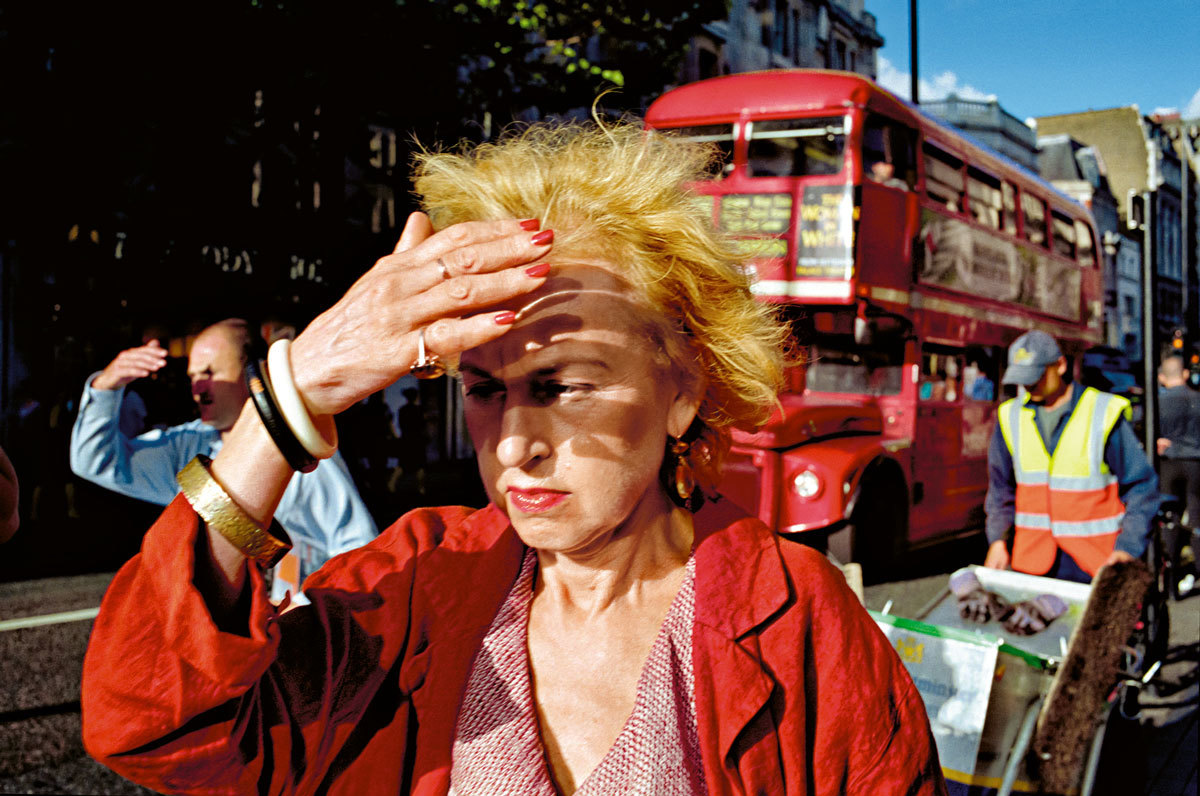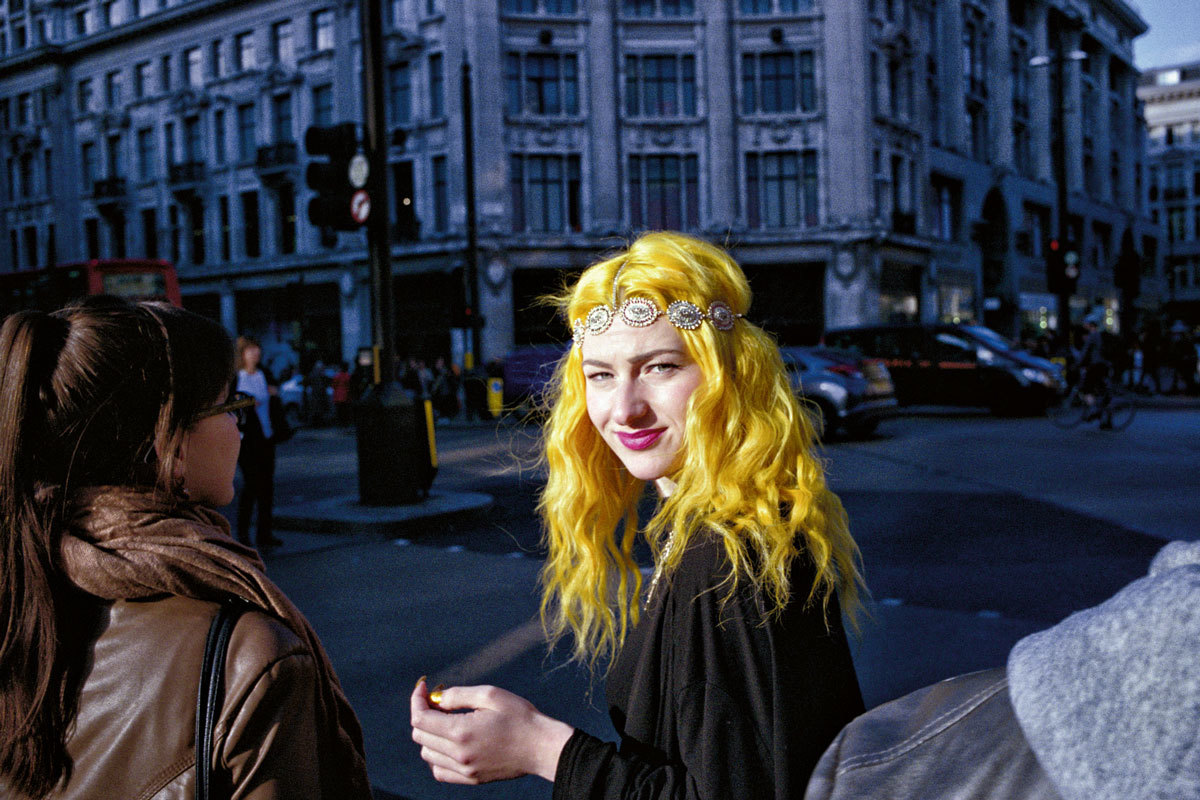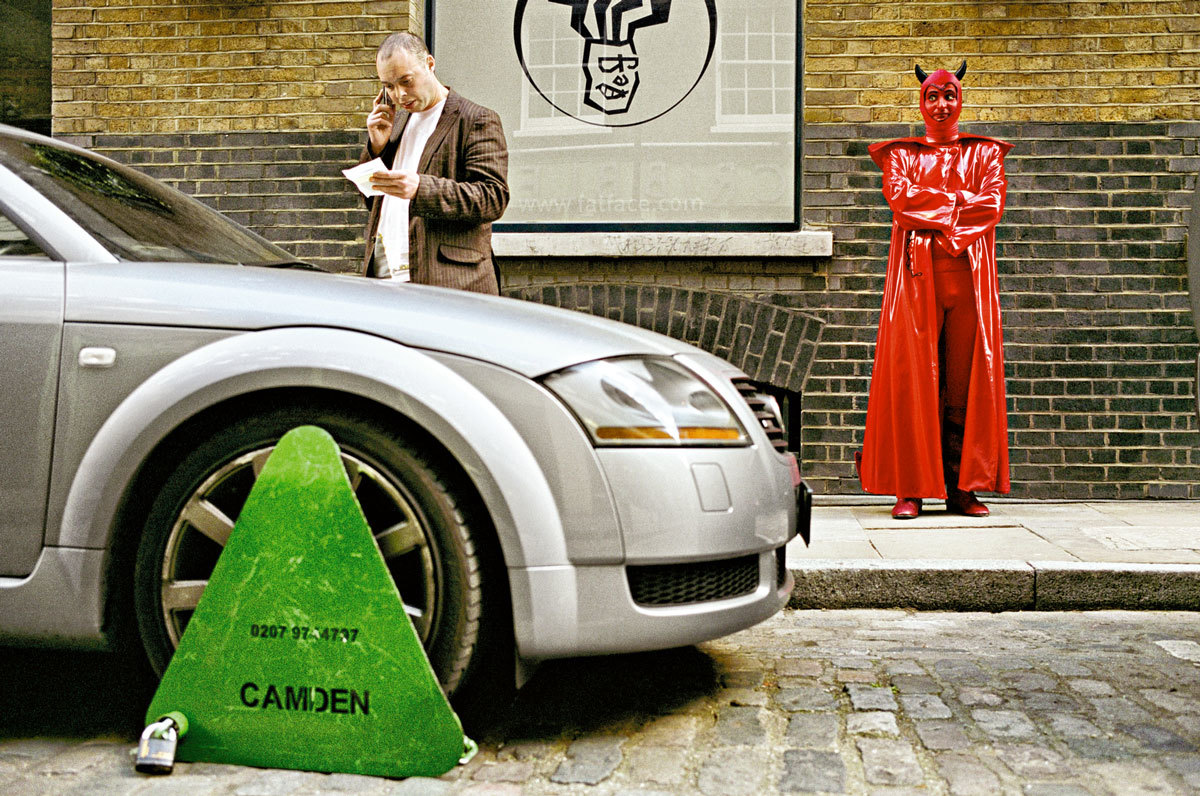Magnum’s latest recruit, British photographer Matt Stuart, knows the streets of London pretty damn well. And he should; he’s been photographing them for the best part of 20 years, silently swimming against the tide of commuters, shoppers, and tourists. When he’s in the street, his photographer’s antenna shoots up the moment he spots something interesting: a Great Dane in a convertible car framed as though it were the driver, a chance collision of color, a serendipitous meeting of billboard characters and real-life characters. Sometimes his images make you laugh; sometimes, you scratch your head. Most times, you have to look twice.
Stuart lassoed 80 of these pictures together for his recently released photobook, All That Life Can Afford. Behind every photo you sense the hungry street snapper, tiptoeing through Oxford Circus, Liverpool Street, Camden, Bank, wherever the feeling takes him. You sense the thrill of catching something unique after hours upon hours of nothing.
When I Skyped Matt recently, he talked about that underlying obsessiveness, how London has changed in recent years, and the Zen-like approach that’s helped him avoid hairy moments with the public.

How did this book All That Life Can Afford come about?
Everything I’ve ever done has come through obsession. From playing the trumpet to skateboarding to smoking weed to kung fu. At one point I was doing aikido on Mondays, taekwondo on Tuesdays, karate on Wednesdays, then Thursday, Friday, Saturday kung fu. That got very confusing, because I’d go to some classes and practice the aikido on the kung fu dude. So I’m a complete obsessive. And with the street photography book you have now, that is a culmination of 12 years of walking pretty much the same route of London obsessively.
What kind of things were you looking for, walking through London?
Initially there is an attraction to characters, to color; for instance, there’s the lady with the orange hair. Obviously I was attracted to her as a character, but the first thing that I became attracted to was the color. Lots of people often ask, ‘Why did you take that picture?’ I took that picture because there was a lot of color that was coming at me. And then I’m interested in gesture and body language and repetition.
In a lot of the photos, there’s something that pops out at you, then you look closer and something else is going on.
I like pictures that engage and reward. You have to look at them and then potentially you find something from them. Usually the tiny moments are far more interesting to me than the things that you kind of bang people over the head with. But yeah, I also love unbelievable pictures.

Like the one of the devil standing behind a man whose wheel has been clamped?
Yeah, exactly. The devil dude was actually being filmed. He was taking time out from filmed by this crew. He was having a break, standing there when this guy turned up and got the parking ticket. The first picture I took was just the devil with a wheel clamp. Then the fucking guy turns up and picks the ticket off his car. And there’s also a weird Fat Face logo in the window, which adds to it somehow. The devil, you can see, is looking at the guy like he’s gonna be pissed. The devil never saw me, and the man never saw me. That’s basically my rule; as long as I don’t interfere in anyway, it’s all fair game.
Any hairy moments with people?
Not at all. Well, there’s one picture in the book where a guy did semi-attack me, one of the only times in my whole career that it’s happened. It’s the photo of the man standing on top of the ladder with the giant dollar. It was the man who’s reflected in the mirror. He did come at me for some reason. He thought I was working for health and safety, because the man was on the ladder without it being held.
What strikes you now, looking back at London when you began?
It’s funny, because I could have carried on doing this for another 20 years — and I do continue doing it — I could have published a book in 20 years time. But there is something — especially when you’re shooting color — about the way things change. Some of those busses you don’t see on Oxford Street anymore, for example.

There’d probably be ten times as many Smartphones in the pictures today, right?
Yeah, I mean some pictures are more recent and you do see some phones…
How have they affected street photography in terms of what’s in front of your lens?
I think it’s like the bowler hat, it’s like the umbrella, it’s like the pipe — it’s just another accessory to the flow of the street. It does slightly take away from some of the things that could happen, because people just have their faces in a phone, and that’s a bit of a shame. But people have their faces in cigarettes and people have their faces in whatever, people are distracted by stuff as they walk around in public and you have to work with that. Also, there’s the vape thing. There’s a whole new wave of pictures of people blowing huge amounts of smoke in the air. That’ll be the next trope.
Do you think Londoners are more camera-aware now?
They’re far more professional camera-aware. I’m often surprised by people saying, ‘Why are you taking my picture with your Leica’; whereas they wouldn’t really give a shit if I was taking a picture with my iPhone. The key with it is honesty. As a street photographer, if you’re out there only doing good, first you don’t give off bad vibes and people don’t realize you’re there, but also if you’re only doing good, there’s nothing you’re doing wrong, which sounds a bit weird, but you’re bulletproof. “What are you doing?” “I’m taking a picture of you because the light in your hair is amazing and the color of that coat, I love this whole scene.” I’m very honest in the moment, and I think people can tell whether you’re honest or not. So that’s my Zen approach.
Credits
Text Oliver Lunn
Photography © Matt Stuart / Magnum Photos
